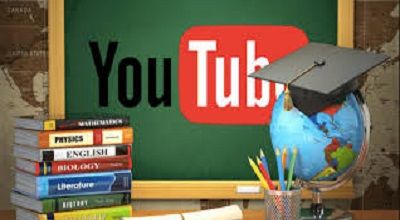Use of YouTube in Education
YouTube in education refers to the use of YouTube videos and the YouTube platform for educational purposes. It involves integrating YouTube videos into classroom teaching. Using YouTube as a resource for self-directed learning and creating educational videos for online platforms.
YouTube has become a popular tool in education due to its accessibility, vast content library, and interactive features. Teachers can easily find and share educational videos on various subjects. Allowing students to learn from experts and explore topics in depth. YouTube also enables students to engage with the content through comments, likes, and subscriptions, fostering a sense of community and encouraging active learning.
In addition to its educational value, YouTube offers several practical benefits for educators and students. It is free to use, making it an affordable resource for schools and individuals. The platform is also user-friendly, allowing teachers and students to easily navigate and find relevant content. Furthermore, YouTube provides tools for creating and editing videos, making it possible for educators to create their own educational content.
However, it’s important to note that using YouTube in education also requires careful consideration and responsible practices. Educators need to ensure that the videos they share are accurate, reliable, and appropriate for their students’ age and learning level. Additionally, they should encourage students to critically evaluate the information presented in videos and to seek out multiple sources for a comprehensive understanding of a topic.
Benefits of YouTube in education
The use of YouTube in education offers several benefits for both educators and students. Here are some of the key benefits:
1. Access to Vast Educational Content: YouTube provides access to a wide range of educational videos on various subjects. Including science, history, mathematics, language arts, and more. Educators can leverage this vast content library to supplement classroom instruction and provide students with additional resources for learning.
2. Visual and Interactive Learning: Videos on YouTube offer visual and interactive learning experiences, making it easier for students to understand complex concepts and visualize abstract ideas. Visual aids can enhance comprehension and retention, making learning more engaging and effective.
3. Flexibility and Self-Paced Learning: Students can access educational videos on YouTube at their own pace and convenience. This flexibility allows for self-directed learning, enabling students to review material. Explore new topics and engage with educational content outside of the traditional classroom setting.
4. Global Perspectives and Diverse Content: YouTube provides access to content from creators around the world. Offering diverse perspectives and insights on various topics. This exposure to global perspectives can broaden students’ understanding of different cultures, languages, and viewpoints.
More here…
5. Creation of Educational Content: Educators can create their own educational videos and tutorials. Tailored to their specific curriculum and teaching objectives. This allows for personalized instruction and the development of custom content that meets the needs of individual students.
6. Engaging and Interactive Platform: YouTube’s interactive features, such as comments, likes, and subscriptions, encourage student engagement and interaction with the content. This fosters a sense of community and allows for discussions related to the educational material.
7. Cost-Effective Resource: YouTube is a free platform, making it a cost-effective resource for educators and students. It eliminates the need for expensive educational materials and allows for equitable access to educational content.
8. Practical Skills Development: Students can develop practical skills related to digital literacy, video production, and media literacy by engaging with educational content on YouTube. These skills are valuable in the digital age and can prepare students for future academic and professional endeavors.
Summary
Overall, YouTube offers a wealth of educational resources and opportunities for educators and students. By leveraging its vast content library, interactive features, and user-friendly platform. YouTube can enhance the teaching and learning experience and promote lifelong learning.
By leveraging these benefits, educators can enhance the teaching and learning experience. Promote active engagement with educational content and provide students with valuable resources for academic growth and development.
